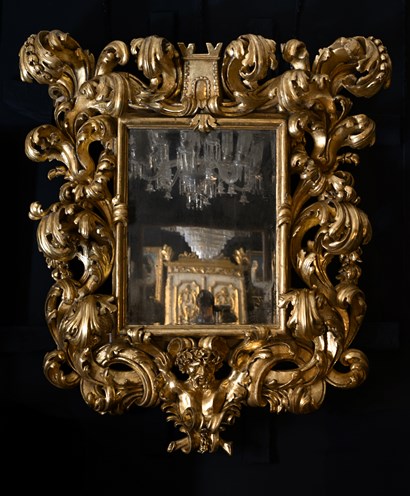This section will be available this Autumn.
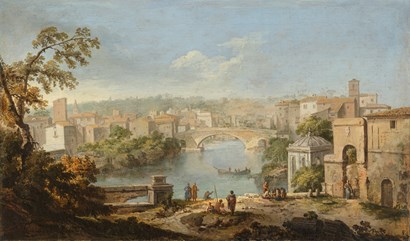
Galerie Alexis Bordes
paolo anesi
Paolo Anesi (Rome, 1697-1773) View of the Ponte Cestio from the Tiber island Oil on canvas 28 x 48 cm Provenance: anonymous sale, Paris, Hôtel Drouot (Maître Baudoin), May 31st, 1919, lot n° 98 (Vanvitelli, View of a city-houses rise on both banks of a river crossed by a stone bridge. In the foreground, on the ground to the right, a fragment of a fluted column and a broken capital); private collection, France Literature: Olivier Michel, Biographical Research on Paolo Anesi, in Publications de l'École Française de Rome, Vivre à peindre à Rome au XVIIIe siècle, vol. 217, 1996, pp. 319–334 Praised during his lifetime as one of the most brilliant vedute painters of the eighteenth century in Italy, Paolo Antonio Anesi nevertheless remains a figure whose life and work are still little studied. Active in Rome, Anesi never left his native city. The panoramas offered by its hills provided him with a multitude of striking viewpoints. The Aventine, one of Rome’s seven hills, appears to have been a favourite subject. To produce his painting, Anesi positioned himself on the Isola Tiberina, a small island in the middle of the Tiber, connected to the left bank by the Ponte Cestio and to the right bank by the Ponte Fabricio.

Van Pruissen Asian Art
nagai ikka
Nagai Ikka (Japan, 1869–1940) Pair of six-panel folding screens with crows, 1930s Ink on paper H 137 x W 268 cm (each) Signed in the bottom corner Provenance: private collection, Japan Nagai Ikka (also known by the art names Zuiunan and Hanpo) was born in 1869 in Suibara, Niigata Prefecture, during the early Meiji period. He trained under leading masters of the Maruyama and Shijō schools, including Suzuki Shōnen, Nakano Kimei, and Hirafuku Hoan, and later absorbed stylistic influences from Kawanabe Kyōsai. This grounding in careful observation and naturalistic rendering provided the foundation for a personal style that balanced precision with expressive freedom. He began painting crow paintings after helping Ernest Francisco Fenollosa create 'One Hundred Crows', a painting he had commissioned from Kyosai. The late Meiji and Taishō periods were marked by profound change in Japanese art, as artists navigated between traditional aesthetics and the growing influence of Western naturalism. Ikka embraced this dialogue, drawing on classical ink painting techniques whilst expanding his horizons abroad. From 1903 to 1908, he lived in the United States, exhibiting at international events such as the Portland Expo, where he won a silver medal, and later at the Italian Expo. His crow paintings, admired both in Japan and overseas, earned him the affectionate nickname 'Doctor of Crows' from statesman Ōkuma Shigenobu. The crow (karasu) has a long symbolic tradition in Japanese culture, appearing in classical poetry, Buddhist imagery, and Shintō cosmology, most famously as Yatagarasu, the mythical three-legged crow. Ikka revitalised this motif, transforming it from a minor decorative element into the central subject of bold, dynamic compositions. This pair of six-panel folding screens demonstrates his command of movement and atmosphere. Painted in ink with sparing touches of colour, the crows appear in varied postures—perched, in flight, or interacting—creating a rhythm that guides the viewer’s eye across the expansive surface. Bold, calligraphic brushstrokes define wings and feathers, while softer washes evoke wind, mist, and shifting light. The result is a scene that is both naturalistic and poetic, combining the restraint of traditional ink painting with a striking modern vitality. Ikka’s crows are not static symbols but living presences, conveying alertness, intelligence, and social energy. His lifelong study of corvid behavior, informed by travels across Japan, Korea, China, Taiwan, and the United States, gave his work an observational depth rare among his contemporaries. At the same time, his art reflects a broader ambition: to elevate the ordinary into the emblematic, merging natural accuracy with expressive force. Today, Ikka’s crow paintings are prized by collectors and studied as important examples of Meiji-period nihonga, where fidelity to nature combines with enduring Japanese aesthetic ideals. These folding screens stand as a testament to his originality and his ability to transform a humble subject into a powerful symbol of vitality and freedom.
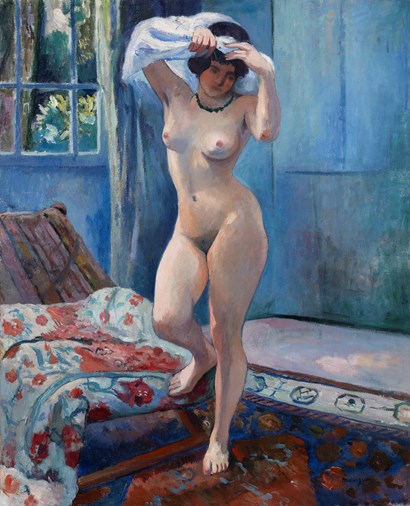
HELENE BAILLY MARCILHAC
Henri Manguin (Paris 1874-1949 Saint Tropez) La Chemise Enlevée, 1908 Oil on canvas 100 x 81 cm Signed lower right Provenance: acquired from the artist by Eugène Druet in 1911 (Galerie Druet); collection Kritchvesky; private collection, France; private collection, Brasil Exhibitions: Paris, Galerie E. Druet, Manguin, Paris 1913, n° 42; Paris, Galerie de Paris, Manguin, 1964, n° 3; Nice, Palais de la Méditerranée, Henri Manguin, plus de cent cinquante oeuvres, 1969, n° 32; Okayama, Hiroshima, Tokyo, Gustave Moreau et ses éleves, 1974; Paris, Galerie de Paris, Centenaire, Henri Manguin, 1976, n° 49 Literature: Pierre Cabanne, Henri Manguin, Neuchätel, 1964, ill. n° 117, p.64; Marie-Caroline Sainsaulieu, Lucille & Claude Manguin, Jean-Pierre Manguin, Pierre Cabanne, Jacques Lassaigne (preface); Henri Manguin: Catalogue Raisonné de l'oeuvre peint, Neuchâtel, Switzerland, Ides et Calendes, 1980, ill. n° 298
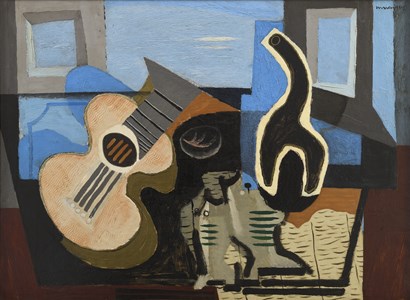
Galerie Berès
louis marcoussis
Louis Marcoussis (Poland, Warsaw 1883-1921 Cusset, France) Nature morte au flacon d'opaline, circa 1927 Oil on canvas 73 x 100 cm Signed lower right 'Marcoussis' Certificate of authenticity n° 1200H143 by Solange Milet on 4 December 2000 Literature: Les Cahiers d'Art, 1927, n° 7-8, p. 5
_ChristoandJeanne-Claude_T638932180913780762.jpg?width=410&height=2000&qlt=90&scale=both&mode=max&format=jpeg)
Edouard Simoens Gallery
christo and jeanne-claude
Christo (Bulgaria 1935-2020 New York) and Jeanne-Claude (Casablanca 1935-2009 New York) The Pont Neuf Wrapped (Project for Paris), 1985 Pencil, charcoal, pastel, wax crayon, and technical data 144 x 165 cm (overall) Provenance: Wolfgang Volz collection; private collection Literature: Christo and Jeanne-Claude: Water Projects, Silvana 2016, p. 167

Galerie Bernard De Leye
Umbilicated dish and gadrooned basin in enameled copper Venise, circa 1500-1530 Ø 33 cm Provenance: collection Messel, Darmstadt; collection Ludwig and Anne Messel, London; collection Leonard and Maud Messel, London until 1953; Galerie Kugel, Paris; private collection, Switzerland Literature: Les cuivres émaillés dits Vénitiens, Corpus des œuvres en collections publiques et privées, Silvana Editoriale, 2018, Volume II, n° 34, p. 92 Twelve convex, curved white gadroons with blue highlights on a green background. This enamel production in Venice spans over a very short period within Venetian Decorative Arts. The basin is adorned with two rows of 24 concave, curved gadroons, then with scale-like motifs. The entirely blue reverse is richly decorated with gilded patterns.

Galerie BA - Berthet Aittouarès
pierre tal coat
Pierre Tal Coat (Clohars-Carnoët 1905-1985 Saint-Pierre-de-Bailleul) Untitled, 1968-1969 Oil on paint tube lid H 18.5 x W 9.5 x D 4.5 cm This work is listed in Tal Coat's online catalogue raisonné under number XD-1969-017 Provenance: private collection Literature: Rodari Florian, Pierre Tal Coat Biographie commentée par les textes, edited by the Domaine de Kerguéhennec, Département du Morbihan, 2017; Marc Donnadieu, Anne de Staël, Pierre Tal Coat - Surgissement de la peinture, exhibition's catalogue, Galerie Berthet-Aittouarès, 2023 Exhibitions: Pierre Tal Coat - Surgissement de la peinture, Galerie Berthet-Aittouarès, Paris, 2023; Tal Coat - L'image est émergence, 21 bis Mirabeau, espace culturel départemental, Aix-en-Provence, 2025

Kunsthaus Kende
Satoshi Hara (Japan, Yokohama, 1962) Flower vase with inlaid Chrysanthemum design (mujinagiku) Ishikawa, 2018 Gold, silver and iron H 18 cm - Ø 20 cm Provenance: artist’s estate Satoshi Hara, who was born in Yokohama, Kanagawa Prefecture in 1962, specialises in creating hammered metalworks embellished with intricate and labour-intensive decorations in gold and silver. This highly developed inlay technique makes the decorations appear as if they were drawn with a thin pen. The artist has created his own technique, which he calls ‘Nanako Zogan.’ With this technique, he is able to inlay patterns into the vessels using 0.3 mm-thick silver wires. Each individual line is created in five different steps. One piece of work contains an average of 50 metres of silver wire, meaning that the artist has to work with approximately 200 metres of silver wire throughout the various stages. There is no room for error in this highly complex and time-consuming process, since it is impossible to rectify any mistakes. The artist has been teaching metalworking at Kanazawa College of Art, Department of Craft, since 2003. His work can be found in numerous museums in Japan and abroad.
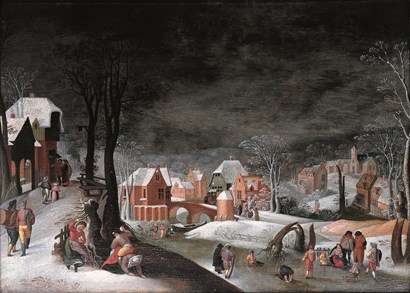
Galerie Florence de Voldère
jacob grimmer
Jacob Grimmer (Antwerp, 1525-1590) Winter landscape Oil on panel 37.3 x 51 cm Provenance: Antonie Palamedes Stevens (1601-1673), painter and collector; private collection, Austria; sale Versailles, 1937; private collection, Paris; sale Galliera, Paris, 29 November 1973 n° 20,21,22,23; private collection, Brussels Literature: R. de Bertier, Jacob et Abel Grimmer, 1991, ill. pp. 104-108 Received as a master of the Guild in 1547, Jacob Grimmer is amongst the great pioneering painters in the history of Northern painting. A contemporary of Pieter Bruegel the Elder, he shared with him a passion for nature; like him, he painted from life, and his works are filled with realism and genuine emotion. It is through the recurring theme of the seasons in his work that Jacob Grimmer expresses his innovative vision of the landscape, where shifting atmospheric moods adapt to everyday and secular scenes.
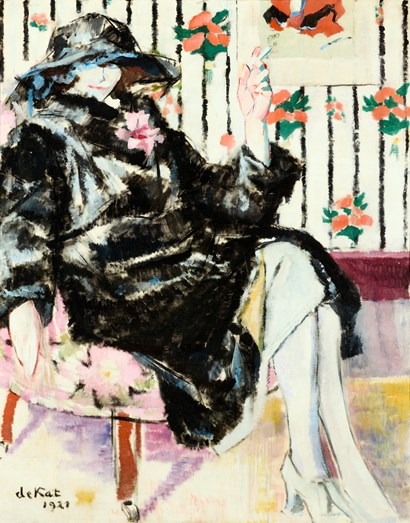
Galerie Raf Van Severen
anne-pierre de kat
Anne-Pierre De Kat (The Netherlands, Delft 1881-1968 La Frette-sur-Seine, France) Femme à la cigarette, 1921 Oil on canvas 102 x 80 cm Signed bottom left Provenance: private collection, Knokke-Heist Literature: Paul Caso, Anne-Pierre De Kat, Une vive intelligence visuelle, Les Editeurs d'Art Associés Exhibition: Guillaume Campo, Meir 47-55 Antwerpen, Exposition n° 121 (label at the back)
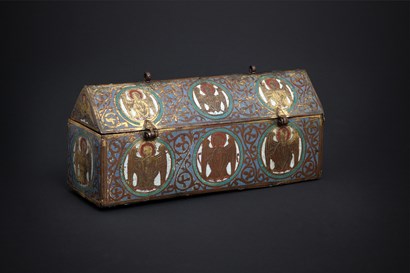
Art et Patrimoine - Laurence Lenne
Reliquary 'in the form of a sarcophagus with a hinged roof' Limoges, mid-13th century Gilt copper plates, champlevé enamels H 11.8 x W 27.5 x D 9.5 cm Literature: Inventaire général des monuments et des richesses artistiques de la France. Emaux limousins du Moyen Age. Correze/Creuse/Haute-Vienne, under the direction of Paul-Édouard Robinne, Éditions de l’Inventaire, Images du Patrimoine, 1995; Emaux de Limoges XIIè-XIXè siècle, under the direction of Jacques Toussaint, Museum of Ancient Arts of Namur, 1996; Valérie & Thomas Becket, De l'influence des princes Plantagenêt dans l'Oeuvre de Limoges, Municipal Museum of the Bishop’s Palace-Museum of Enamel, Limoges, 1999 A reliquary, without a wooden core, taking the shape of a sarcophagus with a hinged roof. It is made of gilt copper plates and decorated with champlevé enamels depicting sixteen half-length angels emerging from clouds against a white enamel background. The decoration consists of two superimposed registers of three engraved gilt angels set within round medallions. The medallions stand out against a blue enamel ground adorned with gilded Gothic foliage and interlace patterns. This reliquary belongs to a series of standardised reliquaries known from the Limousin region, all dating from the 13th century. Its dimensions make it one of the largest examples of this 'sarcophagus with movable roof' type. It is closely related to the exceptional large reliquary of Saint-Yrieix-la-Perche, classified as part of the Treasure of the French Historic Monuments.

Giammarco Cappuzzo Fine Art
Giovanni Giacomo Sementi (Bologna 1584-1636 Rome) The Triumph of David, circa 1630 Oil on canvas 137 x 159 cm Provenance: private collection, Italy Literature: M. Francucci, Giovanni Giacomo Sementi, Un dipinto di soggetto insolito, in Arte Cristiana, n° 869, 2012, pp. 143-148; M. Pulini, Rimini per Simone Cantarini, opere da raccolte private, Rimini 2012, pp. 20-21, fig. 20; A. Pellicciari, I'Eredita’ di Guido Reni, in la pittura in Emilia e in Romagna. The Seventeenth Century, edited by Andrea Emiliani, Milano, 1992; G. Puglia, Il Bastaro, fig. 36, pag. 79; M. Francucci, il naturalismo classicizzato nella Roma di Urbano VIII, LibroCo Italy, Florence, 2013; Ariccia, Gian Giacomo Sementi, Quaderni del Barocco, 2021, p. 8 fig. 14
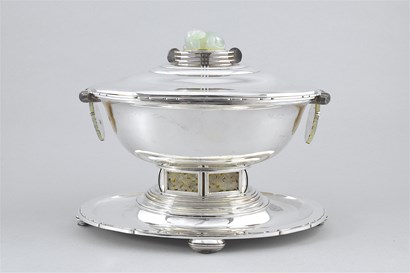
Francis Janssens van der Maelen
Silver box in jade Paris, Art Deco Sterling silver, jade W 35 cm - 4400 gr (total weight) Bears retailer's stamp, Boin-Taburet and maker's mark, Henry & Fils Boin-Taburet were formed in 1873 and quickly established themselves as one of Paris's most noteworthy makers & retailers, winning a Gold medal at the 1889 Paris Exposition Universelle. Arguably their most distinctive work married silver and silver-gilt with other materials including porcelain, marble, and in the case of this stunning Art Deco tureen, jade. Jade was seemingly a less often used material - the only other piece found with a similarly carved jade element was a box that fetched an incredible amount at auction in 2012.
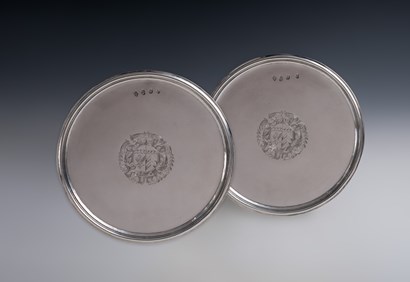
Kunsthaus Kende
Pair of Queen Anne tazze John Bache, London, 1703 Engraved Britannia silver Ø 23 cm, H 7 and 6.9 cm 513.1 gr and 504.8 gr Provenance: private collection, North America Standing on a central round foot, with moulded rim to the top side. The centre depicting an engraved coat of arms commemorating a marriage between two noble families. Outstandingly preserved and rare pair of Queen Anne tazze without repairs and showing their original preserved surface.
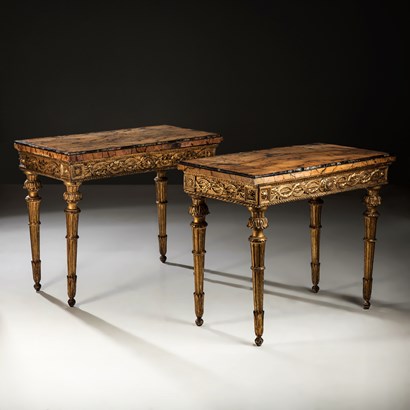
Vagabond Antiques
Pair of Roman console tables Roman Neoclassical period, circa 1770 Veneer, Sienna marble, Breccia Africana marble H 90 x W 112 x D 56 cm Provenance: previously in the collection of Cardinal Vincenzo Vannutelli (1836-1930), Dean of the College of Cardinals; thence by descent; collection of the fashion designer Stefano Gabbana Each with a rectangular top butterfly veneer in richly figured Siena marble, edged in a contrasting band of Breccia Africana marble. The frieze is crisply carved with classical laurel swags, centres by rosettes and anthemion motifs and set against a punched ground to catch the light. The square corner blocks are decorated with stylised sunflowers. The tapering fluted legs are carved in three sections, with boldly gadrooned collars and stiff-leaf details above toupie feet. The carving is of sharp quality throughout, with well-preserved original gilding enhancing the architectural lines of the design.
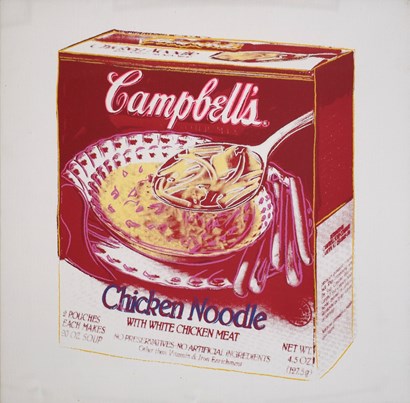
Gilden's Art Gallery
Andy Warhol (Pittsburgh 1928-1987 New York) Campbell's Chicken Noodle Soup Box, 1986 Acrylic and ink on canvas 50.8 x 50.8 cm Signed in felt tip pen 'Andy Warhol' and dated '86' [1986] on the upper canvas overlap, verso Stamped by the Andy Warhol Authentication Board and numbered in ballpoint pen A104.056, on the lower canvas overlap, verso Provenance: Michael Kohn Gallery, Los Angeles; private collection, Arizona; Van de Weghe Fine Art, New York; Demisch Danant, New York; private collection, Atlanta; Sotheby’s New York, May 13th, 2010, lot 191; private collection, Hong Kong; Christie’s Shanghai, September 21st, 2019, lot 310; private collection, Asia Literature: exh. cat. (1986), Warhol. Campbell’s Soup Boxes 1986, Michael Kohn Gallery, Los Angeles, reference n° 153, pp. 19, 30, ill. in colour

Repetto Gallery
valerio adami
Valerio Adami (Bologna, 1935) La firma del muro antico, Odisseo (per E. Pound), 1977 Acrylic on canvas 204 x 152 cm Signed, dated and titled on the reverse: Adami 8.8.77 17.11.77 La firma del muro antico. Odisseo (per E. Pound) Label on the reverse by Galerie Rive Gauche Marcel Strouk, Paris Certificate of authenticity by Archivio Valerio Adami n° 878 Provenance: Galerie Maeght, Paris; private collection, France (acquired from the above) Exhibition: Valerio Adami, 7 October-12 November 1978, Palais des Beaux-Arts, Charleroi; Valerio Adami. Ripensando la realtà, Dep Art Gallery, Milan, 6 March-17 May 2025





 NEWSLETTER
NEWSLETTER
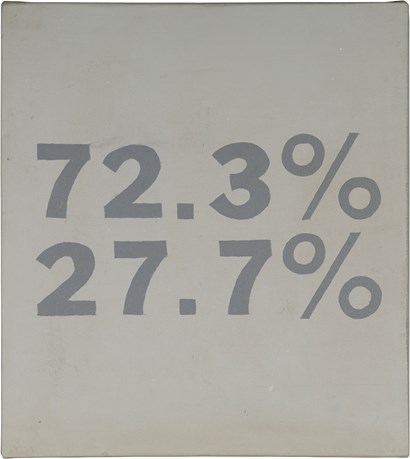
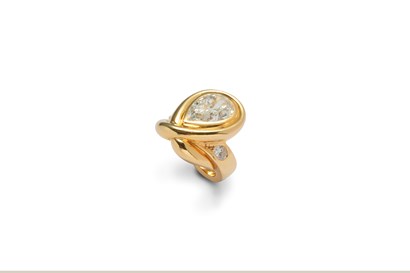
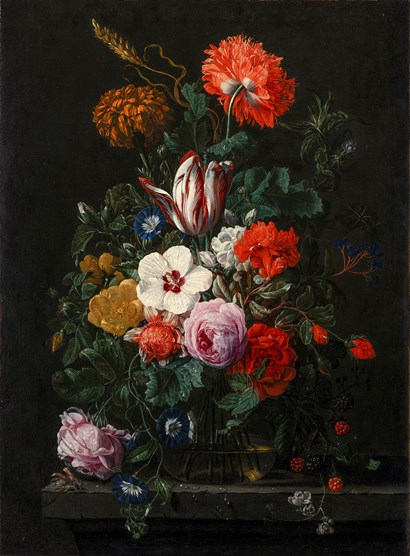
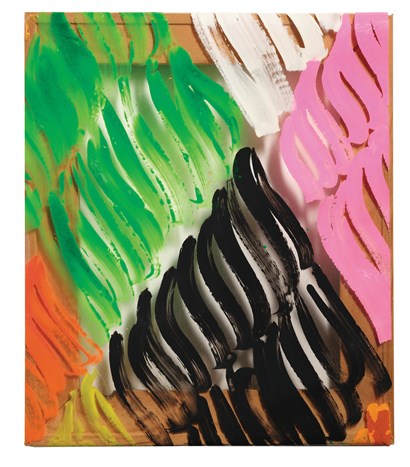


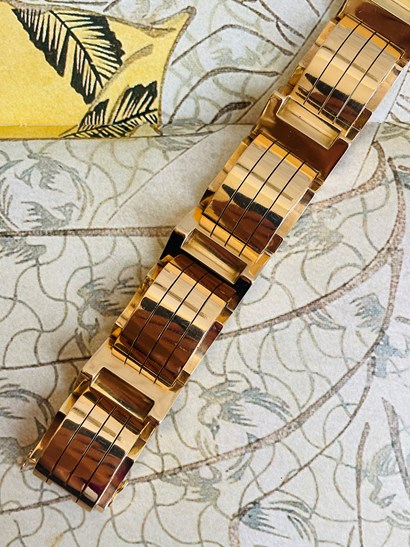
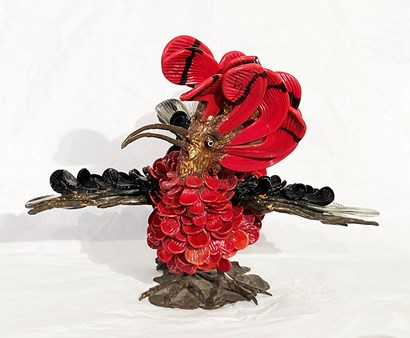
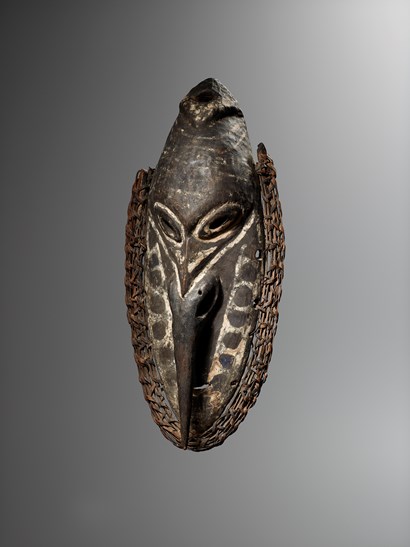
_LéaBelooussovitch_T638926698712577032.jpg?width=410&height=2000&qlt=90&scale=both&mode=max&format=jpeg)

